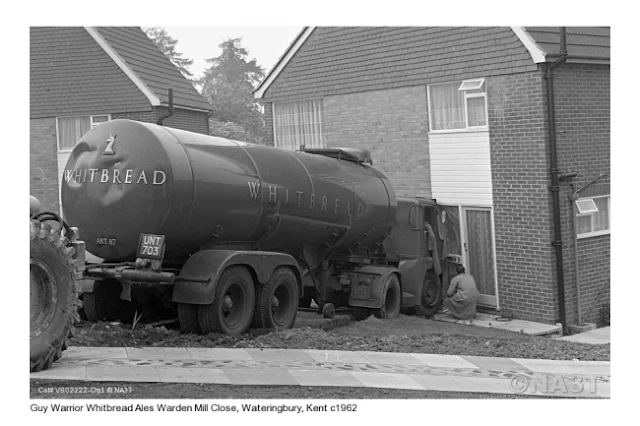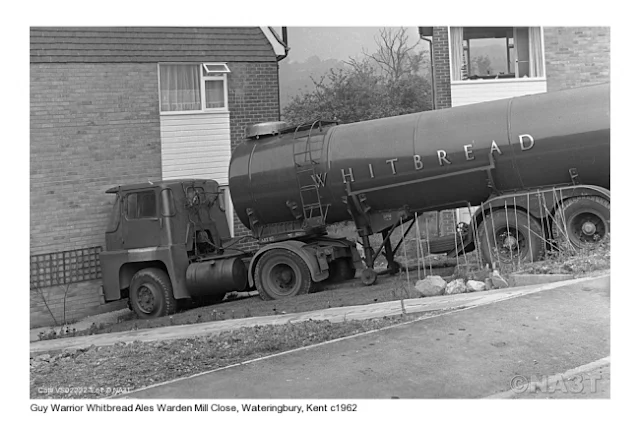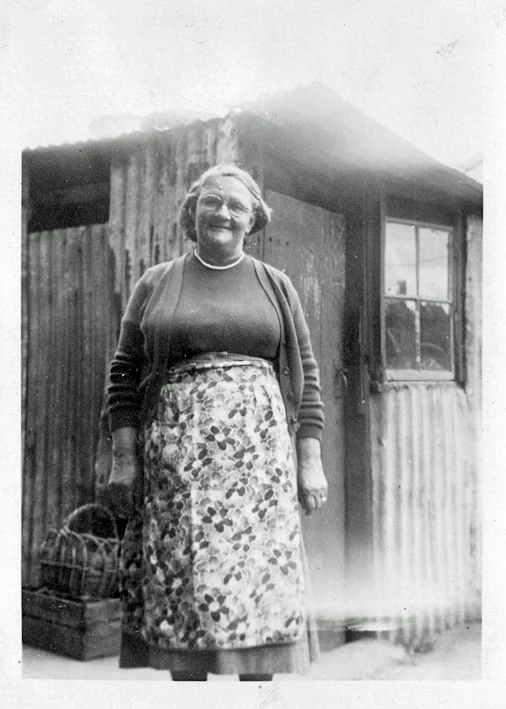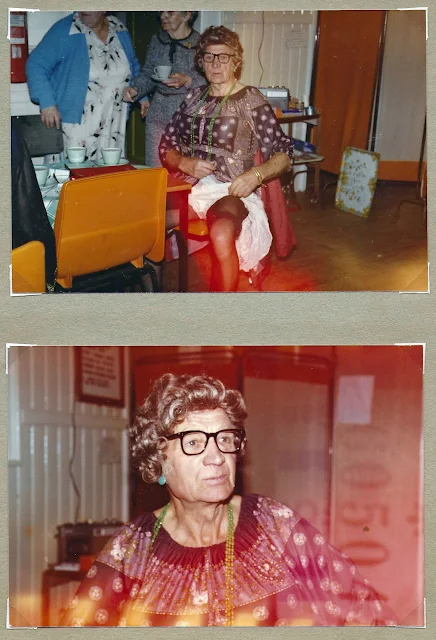For sale on Ebay a Birthday Card to Louie Randall
~~ ~~ Wateringbury Remembered ~~ ~~
.
Our first post was 8th November 2008 since when we have had 48,000 different visitors from 107 countries.
This website is yours and you have made it the interest it is by sharing your memories with us all.
Please continue to send us photos and memories of Wateringbury for new generations to enjoy and see how the village once was.
Please send us your memories no matter how small. Either send them by the contact form or directly to me by email at john.gilham@mail.com
.
Monday, June 09, 2025
Wednesday, May 28, 2025
28 May 1964 a Brewery Tanker rolled down the hill into No 5 Warden Mill Close Wateringbury
A note from Adam Wolfe on a previous post adding more detail. Thanks Adam.
Dear Sir, Regarding previous correspondence and photographs please find below a news report from the Daily Express (28 May 1964) regarding the Courage brewery tanker that rolled down into Warden Mill Close and nearly crashed into one of the houses; an event that I remember well as we lived in the Close.
Kind regards,
Adam Wolfe
House wall Saves baby Express Staff Reporter TWO-YEAR-OLD Melanie Deacon was sitting on the stairs at home when a beer tanker crashed into the wall beside her yesterday. The wall held and Melanie escaped with a blow on the head which knocked her unconscious. The lorry, carrying 25,000 gallons of beer, was driverless when it ran across a main road into the Deacons's new home in Warden Hill Close, Wateringbury, near Maidstone, Kent. CRASH ! Melanie’s mother, Mrs. Jean Deacon, said : “1 was about to take her upstairs for her morning nap. “She was sitting on the stairs waiting for a drink when suddenly there was a tremendous crash. I rushed out of the kitchen and found her lying on the floor. If the lorry had come through the wall it would have killed her.” T'he driver, Henry Ward, of Brentford, Middlesex, said the lorry slipped forward when he got out to check the brake. Last night it was still embedded in the side of the house .
Adam Wolfe
Wednesday, April 30, 2025
RIP DAIL WHITING 13/10/1943 - 15/04/2025
RIP DAIL WHITING 13/10/1943 - 15/04/2025
A Very Sad post indeed. The following is a copy of the post in this months Wateringbury Rostrum but I just wanted to add a personal note as I will miss Dail so much. We had regular chats on the phone or exchanged emails whenever someone asked me a question about the village or its people. Dail was so helpful to me with her invaluable knowledgeable of Wateringbury and its people but was always cautious not to publish anything that may offend families even very many years after the event. We are so lucky to have so much of her knowledge on the website where hopefully it will remain for others to find in many years to come. My thoughts are with Mike and her family and friends.
From the Wateringbury Rostrum May Edition
<>
Dail Whiting was a true daughter of Wateringbury. She was born here in 1943, and after a few years away returned with her new husband Mike in late 1976. They have lived here ever since.
Dail's vast knowledge of Wateringbury people from her childhood, together with a passion for history, led her to engage in some extensive research and write two editions of her book substantially building on George Newman’s recollections of Wateringbury in the 1840’s. The second edition was titled “Wateringbury In the Steps Of George Newman, and Beyond.” From her book, her three essays on the Wateringbury breweries were reproduced in the Summer 2002 edition of the journal “Brewery History”. She was also a regular contributor to John Gilham's “Wateringbury Remembered” and became the 'go to' person for anyone enquiring about Wateringbury and its inhabitants. Dail's research abilities were also used to produce booklets on Wateringbury’s WWI, and later WWII soldiers, which she then donated to our church. Dail will be remembered as one of the most significant Wateringbury historians of recent years, and for her outgoing and captivating personality.
<>
Wednesday, April 16, 2025
Land Army Girls at their Hostel in Wateringbury
Monday, February 24, 2025
Tuesday, February 11, 2025
Home Farm Wateringbury in the 1950's
More lovely photos from Colin Brotherwood taken at Home Farm in the 1950's.
Thank's Colin for sharing the following
Thursday, January 23, 2025
Home Farm Wateringbury in the 1950's
More lovely photos from Colin Brotherwood taken at Home Farm in the 1950's.
Thank's Colin for sharing the following
Friday, January 17, 2025
Trevor Snelling asks for our help.
If anyone is able to help Trevor with his message below please either let me know by email at John.gilham@mail.com or via the comment below.
Can you help please?I have been looking into my family history and found that a number of my ancestors worked at Jude and Hanbury and Leney breweries. This, as you can appreciate, is not out of the ordinary for menfolk living in Wateringbury. But, there is a backstory. My Name originated from Norwich, Norfolk and it appears two brothers started life out in Norwich but found their way to Wateringbury and, worked at the breweries.One of my ancestors (Robert Snelling), was born in Norwich, Norfolk but, on his attestation for the Royal West Kent's in 1903 he stated he was living at 9 Bow Terrace and had been for a year. His sister (Louisa), had married a George Humphrey (Born in Teston) while George Humphrey was stationed in Norwich with the 7th Hussars. After their marriage, they moved to Wateringbury and, 9 Bow Terrace. This was sometime between 1899 and 1901 and, how Robert came to be in Wateringbury in 1903. My Great Grandfather (George Snelling), is also recorded as living at 9 Bow terrace on the 1901 census (occupation was private in the 2nd Norfolk regiment) age 23, with George and Louisa Humphrey. George Snelling stayed in Wateringbury (marrying Phoebe Sharpe) and Bow terrace until he passed away.The common denominator here is Louisa Humphrey giving her brothers a place to stay.Now, George Snelling, Robert Snelling and George Humphrey all worked at some time at the two breweries. Both Georges for some time but Robert only until he started serving with the Royal West Kent's when he moved away from Wateringbury, not to come back.As you can see I have a few gaps that I'd like to plug. In order to fill in these gaps, I was wondering if you know of any records kept for the personnel employed at the breweries please? It would be great to see if both brothers were staying at 9 Bow Terrace at the same time. Its a very long shot I know but it would certainly help with my family history.For info Robert went on to have a distinguished army career(he moved from the west Kents to the 7th Dragoon guards), winning the D.C.M. He is commemorated for his service with a plaque in the Cathedral at Norwich giving his name, regiment and award.I hope my rambling has not confused you but, I feel you needed to know at least some of the story of how my name came to Wateringbury and my efforts to piece together movements.If there are personnel lists for the breweries, that you can point me in the direction of, it will be very much appreciated.Many thanks and best regardsTrevor Snelling
Tuesday, January 14, 2025
Home Farm Wateringbury in the 1950's
More lovely photos from Colin Brotherwood taken at Home Farm in the 1950's.
Thank's Colin for sharing the following.
<>
The first is of my mother Jean Brotherwood (nee Watson) holding my younger brother Stephen. He was born in late September 1956. So that gives an approximate date. Wearing a lovely spotty dress and a nice pair of shoes, she has definitely not come back to Home Farm to pick hops.
Home Farm Wateringbury in the 1950's
More lovely photos from Colin Brotherwood taken at Home Farm in the 1950's.
Thank's Colin for sharing the following.
<>
Thursday, January 09, 2025
From the Scrapbook Collection of Helen Long - Wedding Bells for Reg and Elsie
From the Scrapbook Collection of Helen Long,
Kindly donated by her Niece, Irene Bedding.
Click the photo to enlarge.
From the Scrapbook Collection of Helen Long - Wateringbury Seniors Club - Various Photos
From the Scrapbook Collection of Helen Long,
Kindly donated by her Niece, Irene Bedding.
Click the photo to enlarge.
From the Scrapbook Collection of Helen Long - Wateringbury Seniors Club - Members Entertain 1985
From the Scrapbook Collection of Helen Long,
Kindly donated by her Niece, Irene Bedding.
Click the photo to enlarge.
From the Scrapbook Collection of Helen Long - Wateringbury Seniors Club - Silver Jubilee Party 1977
From the Scrapbook Collection of Helen Long,
Kindly donated by her Niece, Irene Bedding.
Click the photo to enlarge.
From the Scrapbook Collection of Helen Long - Wateringbury Seniors Club - Produce Show 1984
From the Scrapbook Collection of Helen Long,
Kindly donated by her Niece, Irene Bedding.
Click the photo to enlarge.
From the Scrapbook Collection of Helen Long - Wateringbury Seniors Club - Christmas Party 1982
From the Scrapbook Collection of Helen Long,
Kindly donated by her Niece, Irene Bedding.
Click the photo to enlarge.
From the Scrapbook Collection of Helen Long - Wateringbury Seniors Club - Christmas Party 1978
From the Scrapbook Collection of Helen Long,
Kindly donated by her Niece, Irene Bedding.
Click the photo to enlarge.
From the Scrapbook Collection of Helen Long - Wateringbury Seniors Club - Christmas Party 1977
From the Scrapbook Collection of Helen Long,
Kindly donated by her Niece, Irene Bedding.
Click the photo to enlarge.

.webp)

















































